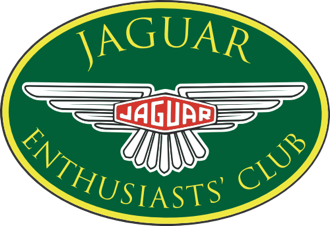
The Jaguar D-Type revolutionized sports car design with aircraft-inspired, lightweight engineering and achingly gorgeous aerodynamics contoured for new top speed records that Jaguar seemed to set year after year at Le Mans. The ground-breaking car would earn Jaguar a hat trick of Le Mans victories. The earliest D-Types were constructed for use solely by the Works competition department. The car on offer, ‘OKV 2,’ was in the first group of three D-Types constructed for Jaguar’s all-out assault on the 1954 24 Hours of Le Mans.
‘OKV 2’ was designated as team lead for Le Mans, with none other than Stirling Moss and his favored co-driver, Peter Walker, behind the wheel. The pair set the fastest time in practice and a record top speed of a blistering 172.97 miles per hour with ‘OKV 2’down the Mulsanne straight. Though they eventually retired with brake issues, several further outings at the international level followed for ‘OKV 2’ in the 1954 season.

“Today, ‘OKV 2’ straddles the line between race and road car perhaps better than any other”, says Jakob Greisen, Senior Car Specialist, Broad Arrow Auctions, “It was built as the exemplar D-Type to lead the Works team, piloted by the best-of-the-best drivers, campaigned at some of motorsport’s most important events, and remains a versatile competitor on historic tours, rallies, and races. It is extensively documented with period testing and Le Mans paperwork and an abundance of archival racing imagery, and is offered at Broad Arrow’s 2025 Amelia Auction, selling without reserve, from 15 years of devoted enthusiast ownership”.
Following additional successful races and two Works testing stints with legendary drivers Norman Dewis, Mike Hawthorn, and Ninian Sanderson, the D-Type was sold in the spring of 1955 to Jack Broadhead for Jaguar’s PR man, Bob Berry to race. Berry proved himself quite the wheelman that year with numerous fine finishes that included three second-place podiums at Goodwood and a further second at Aintree. Following a shunt at Dundrod, the final major race of the season, OKV 2 was rebuilt at Jaguar Works over the winter with a Works-type integral subframe assembly and fitted with larger diameter roll bars and a 1955-style front bonnet. After another successful 1956 season for Berry and OKV 2, save for a few races in 1957, Berry’s time with ‘OKV 2’ would come to an end.

The car was campaigned by Ecurie Broadhead until 1959, when its engine was quiet for the first time in five years. In 1960, the car was sold to Gerald Montgomery Crozier, a Bentley racer, and began a short chain of gentleman racer ownership before landing with Lynx Engineering in the late 1970s for restoration as an amazingly unspoiled race car. In 1999, Terry Larson, a foremost D-Type expert who has thoroughly documented the car, acquired ‘OKV 2’ and would go on to drive it in the second running of the Goodwood Revival along with the Colorado Grand, California Mille, Copperstate 1000, and numerous Jaguar C- & D-Type Tours. Under Larson’s stewardship, Jaguar Test Driver Norman Dewis piloted the car at two Monterey Historic Races at Laguna Seca, a momentous reunion of man and machine after 45 years apart.
Larson parted with the car after a decade, trading it for a Jaguar XKSS. Since that time, the D-Type has been held by a noted west coast collector of significant sports and sports racing cars. Under his ownership it has seen thorough sorting along with numerous additional historic races, including a reunion with Stirling Moss at The Pacific-Union Club in San Francisco in 2011 and a return to Circuit de la Sarthe for the 2012 Le Mans Classic.





